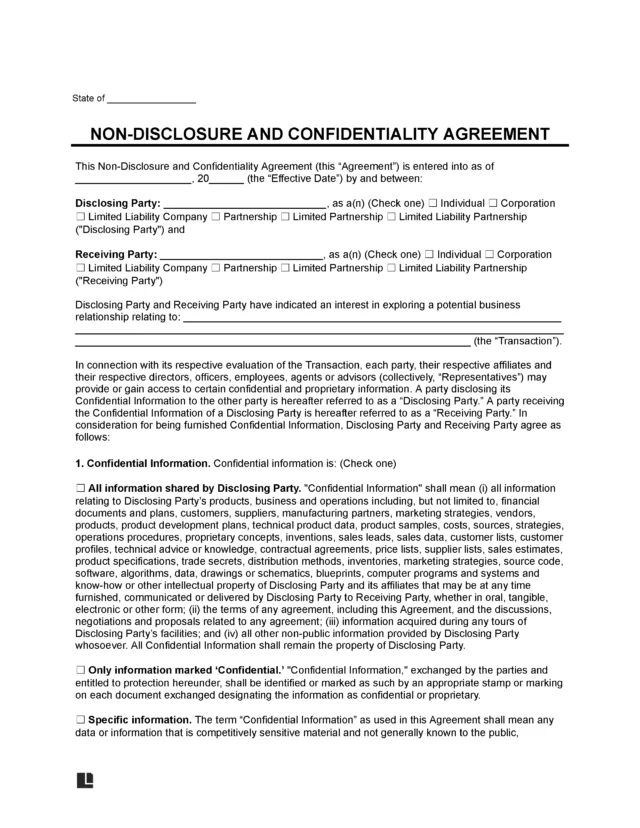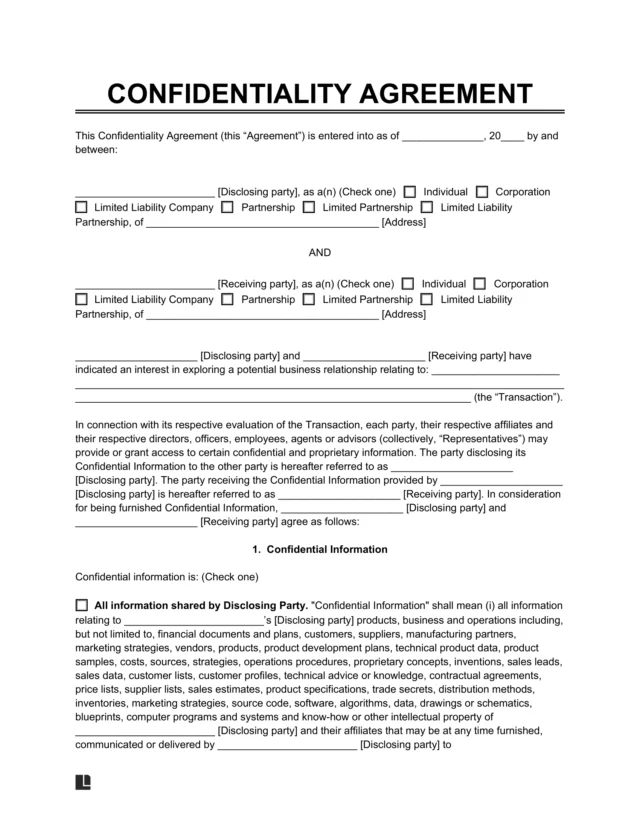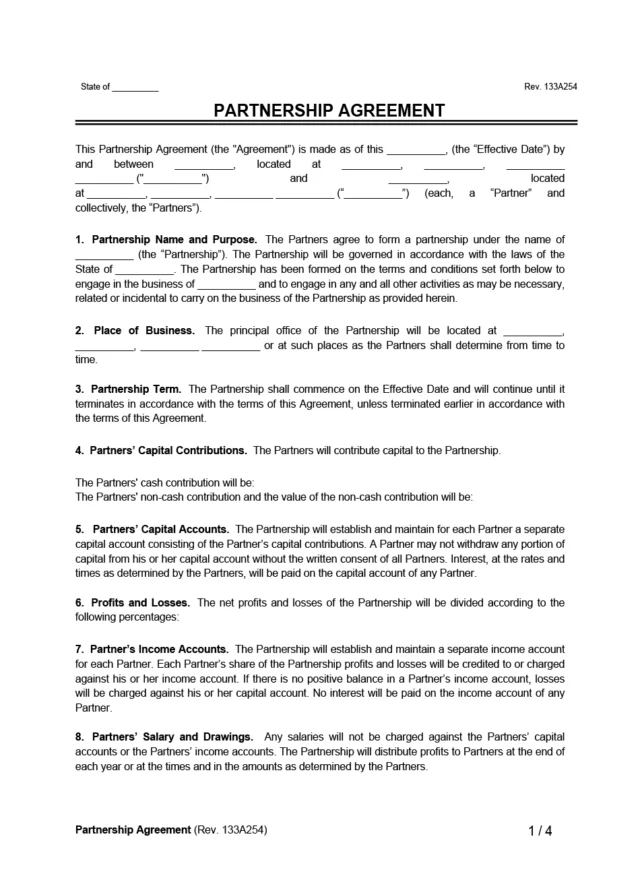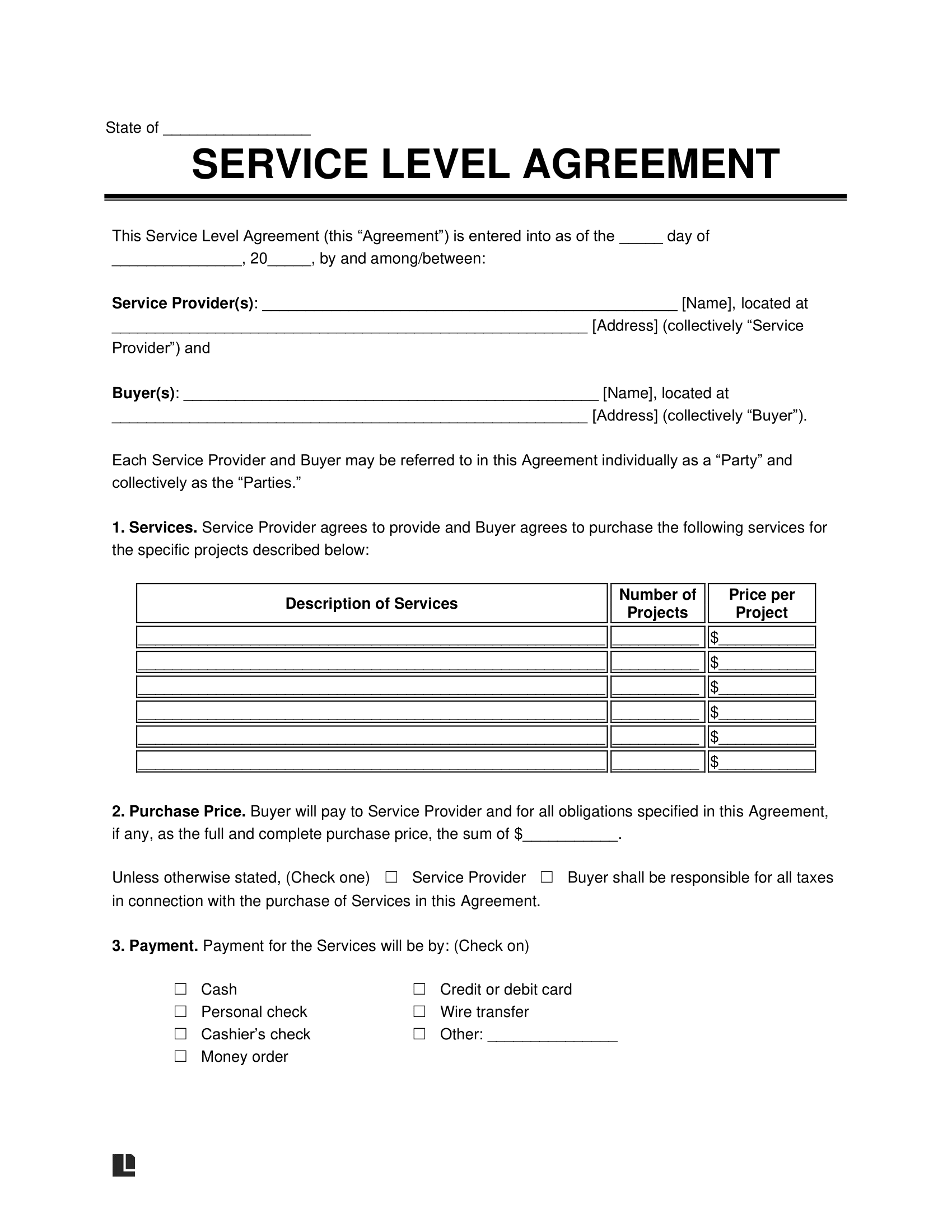What Is a Service Level Agreement?
A service level agreement is a contract between a service provider and a client. It explains what services will be provided and the quality standards both sides agree to.
SLAs are most commonly used in IT, cloud services, healthcare, and outsourced customer service. However, any service provider that wants to build trust and prevent disputes should use an SLA.
Key benefits of using an SLA include:
- Establishes service expectations in writing
- Reduces misunderstandings and legal risk
- Sets benchmarks for uptime, response, and issue resolution
- Defines reporting timelines and escalation paths
- Allows for compensation (like service credits) if standards aren’t met
Is a Service Level Agreement Legally Binding?
Yes, a service-level agreement is legally binding. When the service provider and client properly draft and execute it, it becomes a legal contract between the parties. It protects your legal rights no matter which party you are in the agreement.
Service Agreement vs. Service Level Agreement
A service agreement is broader than an SLA, as it explains the terms and conditions between the provider and client. It covers various aspects, such as the agreement’s duration, payment terms, intellectual property rights, and other factors. An SLA contains more measurable and specific terms relating to the quality and level of service.
Types of SLAs
Explore the most common types of SLAs:
- Customer-based SLA: This type of SLA is written for one specific customer or customer group. It includes terms based on what the customer needs or expects.
- Service-based SLA: This SLA focuses on a specific service, not on who receives it. Everyone who uses that service follows the same rules and quality standards.
- Multi-level (hierarchical) SLA: This agreement includes different levels of service for different users. For example, a company might set one level of service for its entire business, another for certain departments, and another for individual users.
How to Write a Service-Level Agreement
Follow these steps to draft a clear, professional SLA that protects both parties and sets expectations from day one.
1. Define the Service
Explain the services that the service provider will perform for the client. If it’s an internal SLA, clarify the relationship between the two internal departments within a company. Specify the scope of the services, including any limitations and exclusions. Clarify what the provider includes and excludes in their service offerings.
2. Specify Service Levels
Outline the outcomes and standards the provider must meet. This includes performance targets, quality measures, and customer service expectations.
Common service level components include:
- Service availability: The percentage of time the service is operational
- Uptime: The time a system or service is available without interruption
- Response time: How quickly the provider acknowledges client requests
- Resolution time: How fast issues are resolved once identified
- Transaction speed: Time to complete a transaction or data exchange
- Data accuracy: How correct and reliable the information is
- System throughput: The rate at which the system processes data
3. Set Performance Metrics
Once you document the level of service you want to measure, you can set specific performance metrics. Refer to industry standards for metrics and key performance indicators (KPIs). You can set these at or above industry standards, depending on the service provider’s expected capabilities.
Establish the acceptable thresholds and minimum/maximum rates. This way, the service provider has a range they can aim for.
4. Outline the Parties’ Responsibilities
List what each party is expected to do.
- The service provider may need access to equipment, software, or specific inputs.
- The client may be responsible for timely payments, cooperation, or approvals.
Make roles and obligations clear so the agreement stays enforceable and realistic.
5. Establish Reporting Requirements
Clarify how and when performance data will be reported.
- Set a reporting schedule (e.g., weekly status updates, monthly summaries)
- Define the metrics included in each report
- Specify the format (PDF, dashboard, etc.)
This transparency helps both parties track progress and stay accountable.
6. Define the Escalation Process
If service issues arise, there must be a clear path to resolution. Your escalation policy should include:
- How to report an issue
- Triage process (who evaluates and how)
- Escalation thresholds (what triggers further action)
- Chain of escalation (who gets involved at each level)
- Expected resolution timelines
7. Consider Incentives and Penalties
The SLA states that the client must provide service consistent with the document’s terms. However, circumstances may cause the provider to fall short of their service expectations.
The SLA should detail what happens in these cases. For example, the SLA may state that the customer receives a service credit they can use later. If you include provisions for service credits, please specify the nature and amount of compensation. The agreement may also specify penalties the service provider must pay if they fail to deliver their services as promised.
8. Include Standard Legal Terms
Include standard legal terms and conditions that dictate the agreement, such as the following:
- Liability limitations
- Indemnification clauses
- Contract assignment terms
- Confidentiality clauses
- Intellectual property rights
- Governing law
- Dispute resolution methods
- Rights to cancel or amend the agreement
9. Review the Agreement and Complete the Approval Process
Create a process for reviewing and revising the SLA. Once both parties are satisfied with the terms, they can approve and sign it. Please collect feedback and input from all stakeholders before finalizing your agreement.
Before finalizing the agreement, consider the following best practices:
- Schedule regular SLA reviews to track performance and update terms
- Consider including service credits to improve accountability
- Use riders or addendums for small updates instead of redrafting the full agreement
- Clarify what happens at the end of the agreement—renewals, offboarding, and data return
Service Level Agreement Sample
Below, you can see what a service level agreement looks like. You can use our document editor to customize our free service level agreement template and then download in PDF or Word format.






